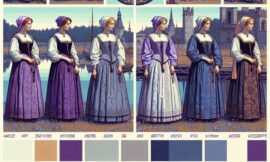Embarking on a journey into the world of sketching as a beginner can be both thrilling and daunting. The fundamental skills of linework, shading, and proportions are essential building blocks for any budding artist. Whether you’re interested in realistic portrayals or abstract interpretations, understanding these techniques is crucial. This blog post is designed to introduce you to five key sketching techniques that will help you improve your craft, whether you’re drawing traditional art or creating digital masterpieces.
The Foundation: Understanding Line Drawing
The Importance of Line Quality
Lines are the backbone of any sketch. A good understanding of line quality can greatly enhance the expressiveness of your drawings. Lines can vary in thickness, darkness, and texture. By practicing with different pressures and angles, you can develop a more dynamic and captivating line work that adds life to your sketches.
Creating Movement Through Lines
Lines can do more than define shapes; they can convey movement and rhythm. Experiment with curvilinear lines and varying line directions to bring an artwork to life. This technique is particularly useful in capturing the essence of motion in still images, providing a sense of energy that engages the viewer.

Mastering Shading for Depth and Dimension
Basic Shading Techniques: Hatching and Cross-Hatching
Hatching involves drawing a series of parallel lines to create shading and texture. Cross-hatching builds on this by layering another set of parallel lines at an angle to the first, offering a more complex texture. These techniques help in creating variations in tone, thereby enhancing the depth and dimension of the sketch.
Blending and Smudging for Realism
For a more realistic look, blending and smudging can soften edges and transitions between shades. Tools like blending stumps or even your fingertips can be used to smooth out pencil marks, creating a seamless gradient. These techniques are invaluable in rendering realistic textures, such as skin or fabric.
Understanding and Drawing Proportions
The Use of Grids
Grids are a powerful tool to ensure accurate proportions. By dividing your canvas into smaller sections, you can more easily judge sizes and distances, helping maintain consistency across your drawing. This is particularly beneficial when working on complex compositions or when scaling an image.
Measuring Techniques for Accurate Proportions
Using your pencil as a measuring tool can aid in achieving the correct proportions. Hold your pencil out at arm’s length and use it to compare sizes and distances within your drawing. This technique helps maintain the relationships between different elements of your sketch, crucial for creating a realistic representation.
The Power of Gesture Drawing
Capturing the Essence of Form
Gesture drawing is about capturing the fundamental form and motion of a subject rather than details. It involves quick, loose sketches that convey the action and posture. This method is excellent for understanding and practicing the human figure’s dynamics or any subject in motion.
Developing Confidence in Your Lines
Regular practice of gesture drawing can boost your confidence, helping you draw more intuitively and fluidly. It trains your hand and eye coordination and improves your ability to depict motion, making it an indispensable tool for any artist.
Incorporating Texture into Sketches
Using Different Tools and Mediums
Experimenting with various tools and mediums can introduce texture into your sketches, a key element that adds interest and complexity. Try using charcoal, graphite sticks, or different paper textures to add a tactile quality to your work. Each tool and medium offers unique characteristics that can change the feel of your sketch.
Simulating Textures Through Patterns
Simplifying and using patterns to simulate textures can enhance the visual richness of your drawing. This technique requires observing and breaking down textures into simple patterns that can be repeated, an approach useful for both traditional and digital sketching methods.
A solid grasp of these sketching techniques provides a strong foundation for any artist looking to grow their skills in both traditional and digital mediums. Mastery in linework, shading, and proportions allows you to unlock endless possibilities, from capturing lifelike images to creating stylized interpretations. By understanding and practicing these techniques, you’ll find yourself not only improving in technical skill but also discovering your unique artistic voice. Whether drawing on paper or digital screen, these essentials will guide your journey through the captivating landscape of sketching.






